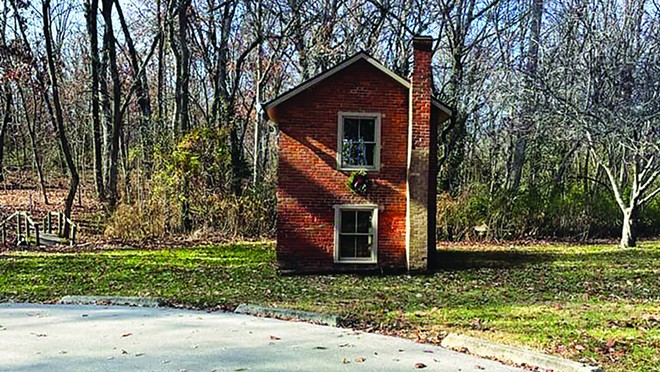
Hats off to Lisa Moffett and Theresa O'Hare who went into action to save the summer kitchen at the famed Leland Farmhouse even though the main house was demolished. And hats off to the Springfield Park Board for seeing the significance of preserving a piece of history and entering into a letter of intent to have the summer kitchen placed in Washington Park, the land that once was owned by the Leland family in the late 1800s and early 1900s. This is not the first time Washington Park became the new site for historic items; in 1974 when the Carnegie Library at Seventh and Capitol was torn down, the large Classical Revival columns on the library's façade were carefully removed and placed in the Washington Park botanical garden.
It is comforting to know that there are people who do care about historic preservation, even though Springfield is often known to tear down instead of fix up. When the demolition of the Leland Farmhouse was underway, many drove by the site, decrying the loss of the historic home. Yet, when it was announced that the summer kitchen could be saved and donations could be made, where were all those who had been so concerned?
Bigger questions kept nagging at me. Why weren't the Leland House and other historic structures protected from demolition long ago? What does it take to create a culture of historic preservation?
I turned to two historic preservation experts, Dick Hart who was recently awarded First Citizen for his work in saving the Strawbridge-Shepherd House and other sites, and Michael Jackson, who was preservation architect for the Illinois Historic Preservation Agency during the 1987-1990 Dana-Thomas House restoration. Both said that the first need is a comprehensive plan – developed by a city such as Springfield and a village such as Leland Grove. Jackson says, "Look at Jacksonville. The city first identified their historic sites and houses and then developed a long-term stewardship plan for the continual use of those historic properties."
The Leland home was never put on a historic register, something the Village of Leland Grove could have pursued decades ago. Identifying historic homes, according to Jackson, is possible through the Historic and Architectural Resources Geographic Information System (HARGIS). This online tool allows researchers to investigate and review potentially significant properties according to the best data available. Sites can be added with information provided by those interested. A quick search of the Springfield area which includes Leland Grove shows many structures that have been identified as possible candidates for designation to the National Register of Historic Places, along with ones that have already been included (Dana-Thomas House, Hickox Apartments, Vachel Lindsay Home, Governor's Mansion etc.). A plan needs to be developed to determine what can be done to protect these sites.
Is there a comprehensive Springfield city plan? Is Leland Grove making a plan? Shouldn't the leaders be looking at the current sites that may have significance for the area and then create a comprehensive plan?
My hope is that we can build an interest in preserving and protecting the historic structures in many parts of the city. I am encouraged that some preservation work is occurring – the 1857 Judge Taylor House, the John Condell house on Fourth Street that was owned by a shopkeeper who sold to Abraham Lincoln, and the Enos Park area.
I hope that all who embrace historic preservation as important – and especially those who lamented the loss of the Leland home – will donate. The summer kitchen must be moved by February or it, too, will be torn down.
Cinda Ackerman Klickna moved to Springfield in the 1960s and remembers the demolition of the Orpheum Theater and has watched too many structures meet the same fate.

